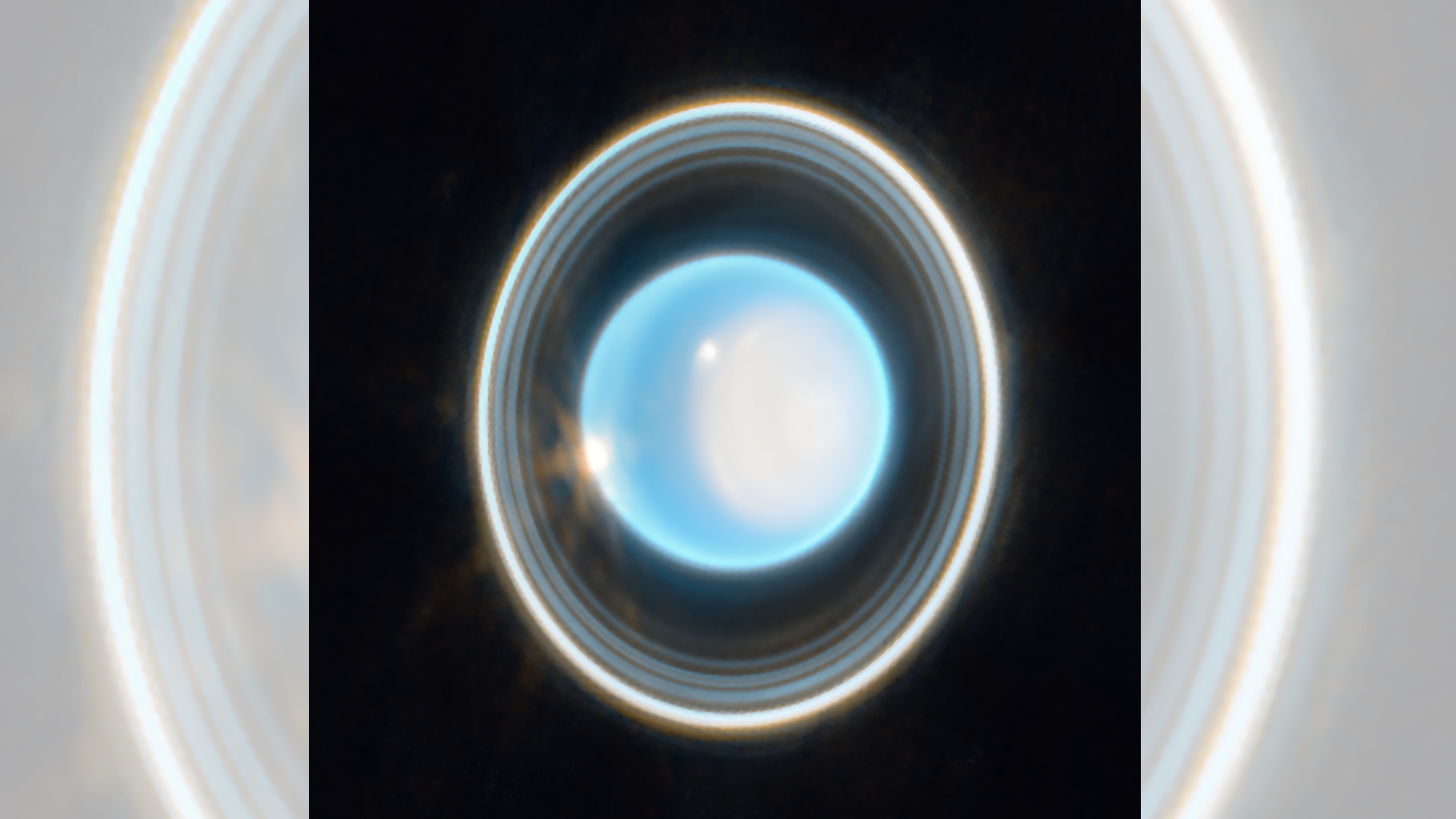4 of Uranus' biggest moons have secret, underground oceans, new study suggests
A reanalysis of Voyager data suggests that four of Uranus moons may have oceans tucked between their cores and icy crusts.

Hidden oceans may lurk under the icy crusts of four of Uranus' moons.
Scientists recently reanalyzed data from the Voyager spacecraft that flew by Uranus in the 1980s and found that four of Uranus' largest moons — Ariel, Umbriel, Titania and Oberon — may be warm enough to host liquid oceans. In Titania and Oberon, these oceans might even be warm enough to potentially support life, according to a recent study in the Journal of Geophysical Research.
"When it comes to small bodies — dwarf planets and moons — planetary scientists previously have found evidence of oceans in several unlikely places, including the dwarf planets Ceres and Pluto, and Saturn's moon Mimas," study lead author Julie Castillo-Rogez of NASA's Jet Propulsion Laboratory in Southern California said in a statement. "So there are mechanisms at play that we don't fully understand."
The new study integrated 1980s Voyager 2 data with information on other icy moons such as Pluto's Charon and Saturn's Enceladus drawn from more recent NASA missions such as Galileo, Cassini, Dawn, and New Horizons. Uranus has 27 moons, but the researchers focused on the five largest, which are Ariel, Umbriel, Titania, Oberon and Miranda. Of these, Ariel is the smallest at 720 miles (1,160 kilometers) across, while Titania is the largest at 980 miles (1,580 km) across.
Previously, scientists thought only Tatiana was likely to generate any internal heat via radioactive decay — the process by which unstable atoms lose energy through radiation — believing the other moons to be too small. However, modeling the other moons' porosity suggested that all but Miranda are insulated enough to retain internal heat created by radioactive decay. The researchers also found that any potential oceans beneath the icy crusts of these moons would be rich in chlorides, ammonia and salts, both of which would lower the freezing point of the water. The combination of a low freezing point and enough internal heat could mean that Ariel, Umbrial, Titania and Oberon all have oceans dozens of miles deep within their interiors, the researchers reported.
In 2020, scientists detected some evidence of recent geological activity on Ariel, suggesting the possible movement of a potential inner ocean. Miranda also has surface features that look relatively fresh, according to the researchers, but their modeling suggests that if the moon did have a liquid ocean at some point, it is likely frozen by now.
To find out if these hidden oceans really exist, scientists will have to get creative. Spectrometers that can detect wavelengths of light reflected by ammonia and chlorides could help prove the presence of these chemicals under the crusts. Scientists could also use instruments that can detect electrical currents carried by liquid water to probe beneath these moons' surfaces. New modeling studies on how these moons formed could also help researchers plan what kind of observations they will need to make in the future, Castillo-Rogez said.
Get the world’s most fascinating discoveries delivered straight to your inbox.
"We need to develop new models for different assumptions on the origin of the moons in order to guide planning for future observations," she said.

Stephanie Pappas is a contributing writer for Live Science, covering topics ranging from geoscience to archaeology to the human brain and behavior. She was previously a senior writer for Live Science but is now a freelancer based in Denver, Colorado, and regularly contributes to Scientific American and The Monitor, the monthly magazine of the American Psychological Association. Stephanie received a bachelor's degree in psychology from the University of South Carolina and a graduate certificate in science communication from the University of California, Santa Cruz.


